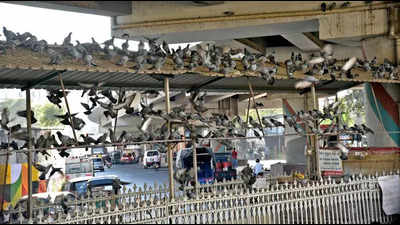- News
- Proposed bird houses in public gardens cause a flutter
Proposed bird houses in public gardens cause a flutter
Surat: Environmentalists from the city are raising concerns about the proposed development of two bird houses, at public gardens in the City Light and Piplod areas.
It is claimed these bird houses will draw pigeons, posing a hazard to public heath. At a time when major cities are penalizing the feeding of birds to control the population of pigeons, objections are being raised against the civic body's move to develop these bird houses in public gardens.
Budget 2025 Updates
In a letter to city municipal commissioner, Nature Club Surat (NCS) highlighted the risks in the development of bird houses.
A social organization has proposed to develop two bird houses in two gardens of Athwa Zone, which will be 60 feet high and can shelter 1,000 birds.
"Pigeons are known carriers of diseases such as histoplasmosis, cryptococcosis, and psittacosis, transmitted through airborne particles from droppings. Hospitalization and fatalities linked to prolonged exposure to pigeon droppings have been reported across the country," Snehal Patel, president of NCS, stated in his letter.
The letter says that a large pigeon population in public spaces increases respiratory ailments, skin allergies and sanitation concerns. "Pigeons breed rapidly and dominate nesting spaces, displacing native bird species essential for ecological balance. Their presence in large numbers depletes food resources, reducing bird diversity in urban areas," added Patel.
Highlighting actions by civic bodies in metro cities, NCS said the Brihanmumbai Municipal Corporation (BMC) fines individuals between Rs 100 and Rs 500 for feeding pigeons outside designated areas in order to preserve public health and urban hygiene.
"We should plant native trees and shrubs in public gardens to naturally support diverse bird species. We can put up nests for different types of birds," added Patel. In the letter, Patel appealed to adopt scientifically backed conservation strategies to protect urban biodiversity.
End of Article
FOLLOW US ON SOCIAL MEDIA




















